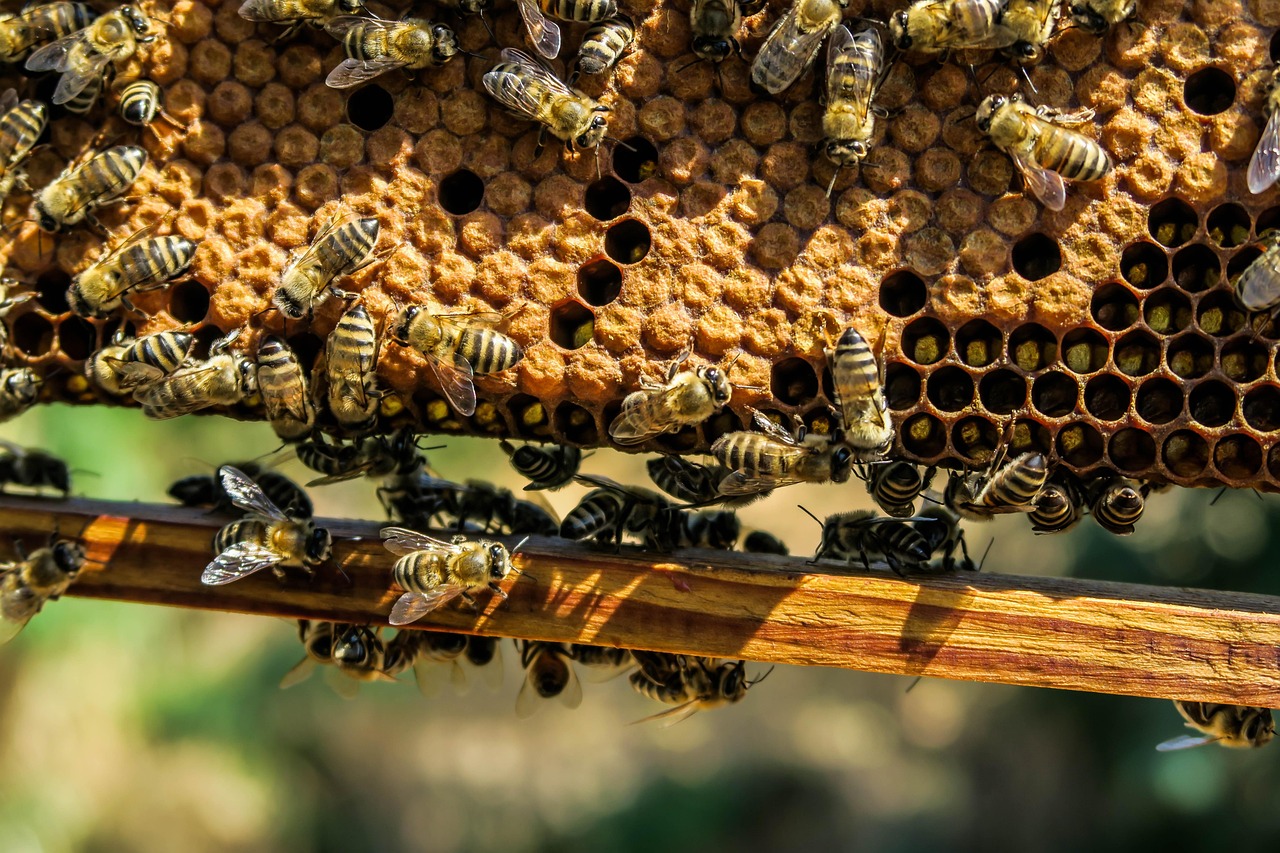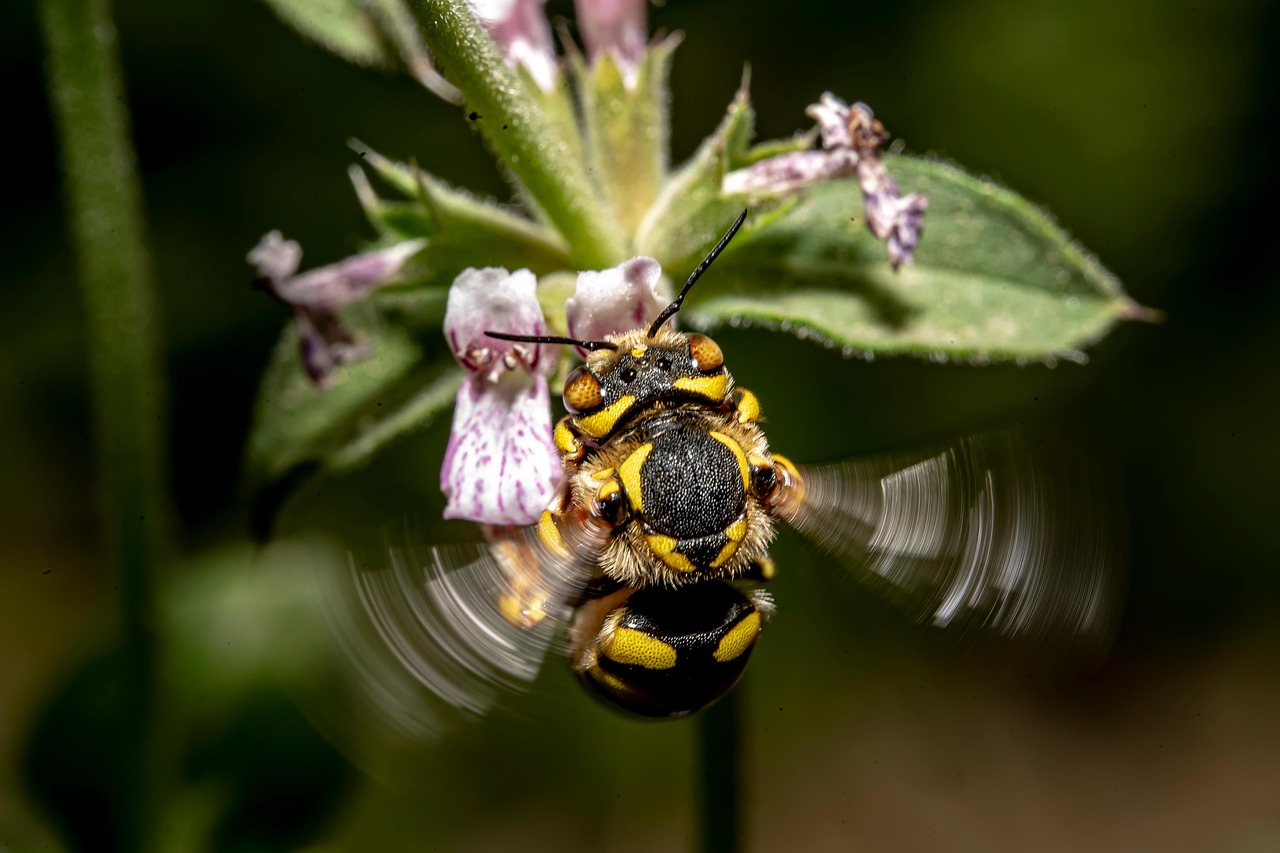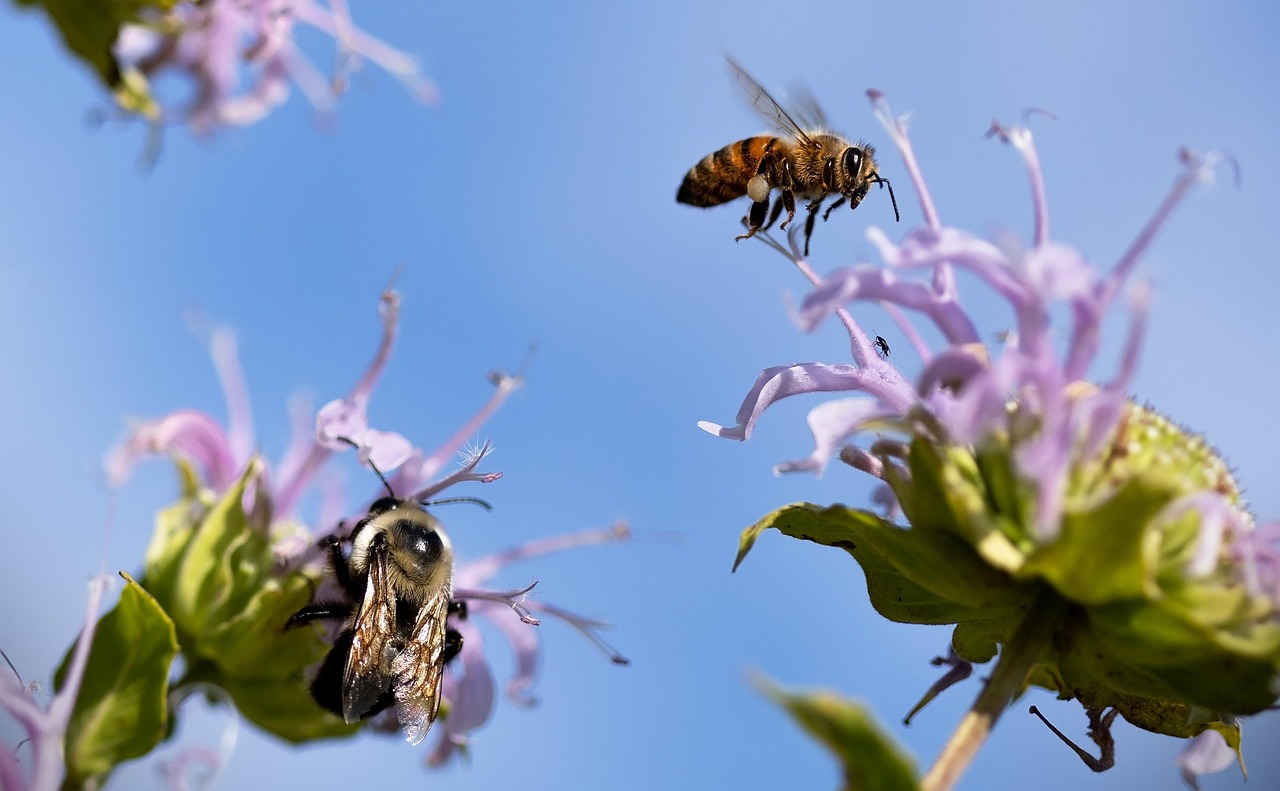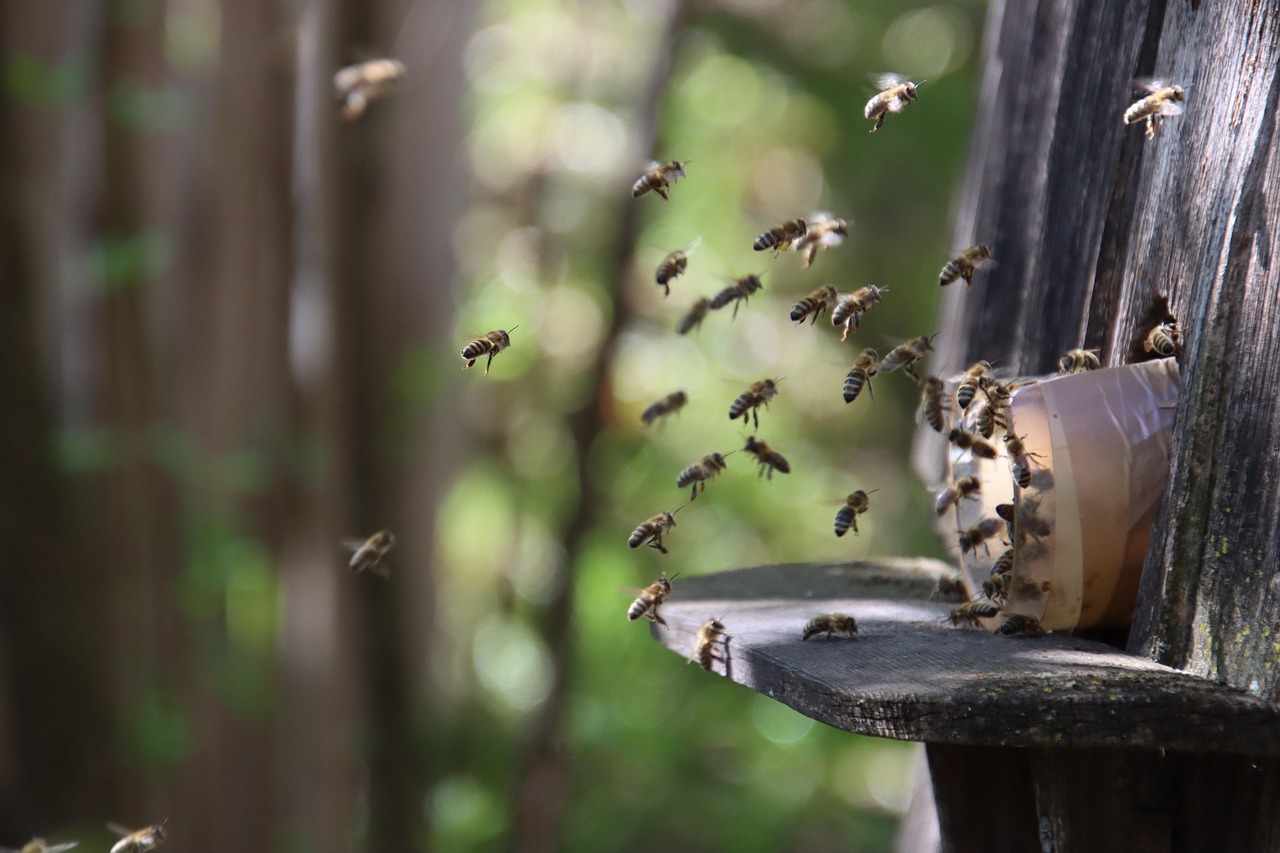Ground nesting bees play a vital role in our ecosystems as gentle pollinators. These fascinating insects not only contribute to biodiversity but also support agriculture by enhancing crop yields. Understanding their behaviors and habitats can help us appreciate their importance and promote their conservation.
Ground nesting bees are primarily solitary insects that create their nests in the soil. Unlike many other bee species, they do not live in hives. Instead, each female typically builds her own nest in a site that offers the right conditions for survival, such as loose, well-drained soil. This unique nesting behavior sets them apart from their more commonly known counterparts, like honeybees.

There are over 70 species of ground nesting bees in North America alone, with a diverse range of sizes, colors, and nesting habits. Some common species include:
- Andrena (mining bees)
- Colletes (plasterer bees)
- Lasioglossum (sweat bees)
- Melandrena
These bees are crucial for pollination, especially for wildflowers and many agricultural crops. Their foraging activities enhance plant reproduction and support healthy ecosystems. Ground nesting bees are generally active during the spring and early summer when many flowers are in bloom.
Nesting Habits and Life Cycle
The life cycle of ground nesting bees begins with the female selecting a suitable site to build her nest. This process usually occurs in the spring after emerging from hibernation. The female excavates a tunnel in the soil, which may extend several inches deep. She then constructs individual cells within the tunnel, laying one egg in each cell and providing it with a food source, typically pollen and nectar.
After laying her eggs, the female seals the nest and dies shortly thereafter. The larvae will develop inside the cells over the course of several weeks. They pupate within the nest and emerge as adult bees the following spring. This cycle ensures that ground nesting bees are perfectly timed with the blooming of plants they rely on for food.
Habitat Preferences
Ground nesting bees thrive in various habitats, but they prefer areas with specific conditions that facilitate nesting. Some key habitat preferences include:
| Habitat Type | Description |
|---|---|
| Open Fields | These areas provide sunlight and access to a diverse range of flowering plants. |
| Sandy Soil | Loose, well-drained soils allow for easier excavation of nests. |
| Undisturbed Areas | Minimal human disturbance is essential for maintaining nesting sites. |
The presence of nearby flowering plants is also crucial, as these provide the necessary food sources for adult bees. Without access to suitable flowers, ground nesting bees may struggle to survive.
Understanding the needs and behaviors of ground nesting bees can help us foster environments that support their populations. As pollinators, they are integral to maintaining healthy ecosystems and ensuring agricultural productivity. By learning more about these gentle insects, we can take steps to protect their habitats and promote biodiversity in our surroundings.
Behavior and Foraging Patterns

The behavior of ground nesting bees is fascinating and diverse. These bees exhibit unique foraging patterns that are closely linked to their nesting habits and the availability of flowers. Understanding these behaviors can provide insight into how they contribute to pollination and ecosystem health.
Ground nesting bees primarily forage for nectar and pollen. Nectar serves as an energy source, while pollen provides essential proteins for their larvae. Their foraging behavior is influenced by various factors, including:
- Flower Preferences: Different species of ground nesting bees have varying preferences for flowers. Some are more attracted to certain colors, shapes, or scents.
- Time of Day: Many ground nesting bees are active during the day, especially when temperatures rise. They often forage in the morning when flowers are fully open.
- Environmental Conditions: Weather conditions, such as temperature and humidity, can impact their foraging activity. Bees tend to avoid foraging during heavy rain or extreme heat.
Pollination Efficiency
The efficiency of ground nesting bees as pollinators is noteworthy. Their behavior enhances the pollination process, leading to higher seed production in flowering plants. Several factors contribute to their effectiveness:
- Body Structure: Ground nesting bees often have hairy bodies, which allow them to collect and transport pollen effectively.
- Nesting Habits: By nesting in the ground, they visit a variety of flowers within close proximity, increasing the chances of cross-pollination.
- Solitary Nature: Unlike social bees, solitary ground nesting bees do not compete for resources. This allows them to focus on efficient foraging without the hustle of hive dynamics.
Threats to Ground Nesting Bees

Despite their importance, ground nesting bees face numerous threats that jeopardize their populations. Understanding these threats can help in developing strategies for their conservation. Some significant threats include:
- Habitat Loss: Urban development and agricultural expansion lead to the destruction of natural habitats. This reduces the availability of nesting sites and flowering plants.
- Pesticide Use: The application of pesticides in agriculture poses significant risks to ground nesting bees. These chemicals can be harmful or lethal when bees come into contact with treated plants.
- Climate Change: Changes in climate patterns can disrupt the life cycles of both ground nesting bees and the plants they depend on. Altered flowering times can lead to mismatched availability of food sources.
Conservation Efforts
To protect ground nesting bees, various conservation efforts can be implemented at individual, community, and policy levels. Here are some effective strategies:
- Creating Bee Habitats: Planting native wildflowers and maintaining areas of bare soil can provide essential nesting sites and food sources.
- Avoiding Pesticides: Reducing or eliminating pesticide use in gardens and agricultural practices can significantly benefit bee populations.
- Education and Awareness: Raising awareness about the importance of ground nesting bees can encourage community involvement in conservation efforts.
Maintaining a healthy population of ground nesting bees is vital for both ecosystems and agriculture. By being aware of their behaviors and the challenges they face, we can take meaningful steps toward ensuring their survival.

Interactions with Other Species
Ground nesting bees play a crucial role in their ecosystems, interacting with various other species, including plants, other pollinators, and even predators. These interactions highlight the importance of biodiversity and the interconnectedness of different life forms in natural habitats.
Mutualism with Plants
One of the most significant interactions involves mutualism with flowering plants. Ground nesting bees are essential pollinators, facilitating the reproduction of many wildflowers and agricultural crops. This relationship benefits both parties:
- Pollination: As bees forage for nectar and pollen, they transfer pollen from one flower to another, promoting fertilization and seed production.
- Food Sources: In return, flowering plants provide bees with the necessary food sources for their survival and reproduction, creating a symbiotic relationship.
Competition with Other Pollinators
While ground nesting bees are efficient pollinators, they often share their habitats with other species, such as honeybees, bumblebees, and other solitary bees. This competition for resources can be intense, particularly during peak blooming seasons.
To navigate this competition, ground nesting bees have developed specific foraging strategies:
- Niche Specialization: Some species may specialize in particular types of flowers that are less frequented by other pollinators, reducing competition.
- Temporal Foraging: Ground nesting bees may adjust their foraging times to avoid overlaps with other pollinators, ensuring they have access to food resources.
Predation and Parasitism
Ground nesting bees are not only affected by competition but also face threats from predators and parasites. Understanding these challenges is essential for appreciating their ecological roles.
Predators
Various predators target ground nesting bees, including:
- Birds: Some bird species prey on bees, especially when they are foraging or resting on flowers.
- Wasps: Certain wasps may hunt ground nesting bees or invade their nests to consume larvae.
Parasites
Ground nesting bees also contend with parasitic organisms, which can affect their populations. These include:
- Cuckoo Bees: Some species of cuckoo bees lay their eggs in the nests of ground nesting bees. The larvae of cuckoo bees consume the food stored for the host’s offspring.
- Nematodes: Soil-dwelling nematodes can infest bee nests and pose a threat to developing larvae.
The Role in Ecosystem Health
The presence and health of ground nesting bee populations reflect the overall health of ecosystems. Healthy bee populations indicate a thriving environment that supports diverse plant life and other wildlife.
By contributing to pollination services, ground nesting bees enhance biodiversity. They help maintain healthy plant communities, which in turn support various animal species. Protecting these gentle pollinators is essential not only for agriculture but also for preserving natural ecosystems.
Conservation efforts aimed at preserving ground nesting bee habitats can have far-reaching benefits for entire ecosystems. By fostering environments that support these bees, we contribute to the resilience and sustainability of our natural world.
Challenges in Research and Awareness
Despite the importance of ground nesting bees, there are significant challenges in researching and raising awareness about these vital pollinators. Many people are more familiar with honeybees and bumblebees, leading to a lack of knowledge regarding the diverse roles played by ground nesting species.
Some challenges include:
- Lack of Research: Ground nesting bees have not been studied as extensively as social bee species. This gap in research hinders our understanding of their ecology, behavior, and conservation needs.
- Public Perception: Common misconceptions about bees often lead to negative attitudes toward all bee species. Educating the public about the differences between ground nesting bees and more aggressive species can foster a more positive outlook.
- Funding Limitations: Conservation efforts require financial support for research, habitat restoration, and educational programs. Securing adequate funding for ground nesting bee conservation can be challenging.
Engaging Communities in Conservation
Community involvement is crucial for the successful conservation of ground nesting bees. Engaging local communities can create a collective effort to protect these pollinators.
Some effective strategies for community engagement include:
- Workshops and Events: Organizing events that educate the public about the importance of ground nesting bees and how to create bee-friendly habitats can inspire action.
- Citizen Science Projects: Encouraging community members to participate in monitoring bee populations can raise awareness and provide valuable data for researchers.
- Partnerships with Local Organizations: Collaborating with environmental organizations, schools, and gardening clubs can amplify efforts to promote awareness and conservation.
Final Thoughts
Ground nesting bees are essential to the health of ecosystems and agriculture. Their unique behaviors and roles as solitary pollinators contribute to biodiversity and the sustainability of plant communities. Understanding their nesting habits, foraging patterns, and interactions with other species deepens our appreciation for these gentle pollinators.
Despite facing threats from habitat loss, pesticide use, and climate change, concerted conservation efforts can help protect ground nesting bees. By creating suitable habitats, reducing pesticide use, and fostering community awareness, we can create environments that support their populations.
The journey of unearthing the secrets of ground nesting bees reveals their significance far beyond mere pollination. Protecting these gentle insects is not just about preserving a species; it is about safeguarding the intricate web of life that sustains our planet. As we work together to promote awareness and conservation, we take important steps toward ensuring a healthy environment for future generations and all living beings that depend on it.
